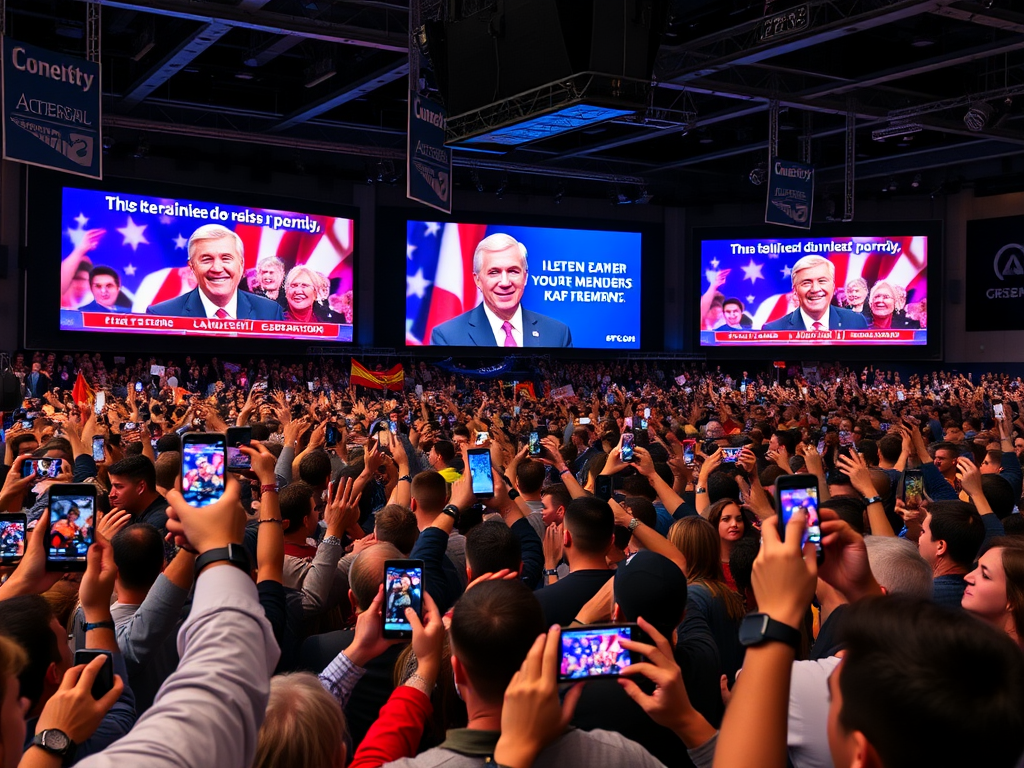In today’s fast-paced digital world, AI at the helm of political campaigns and media messaging is more than a trend it’s a game changer. From shaping public opinion to generating customized messages, artificial intelligence is rewriting the playbook for modern elections. It is not just assisting campaign teams; it is transforming how politics is practiced and perceived.

AI at the Helm of Political Strategy
Political strategy has always relied on data polls, surveys, and historical voting patterns. But now, artificial intelligence makes it possible to analyze that data faster and deeper. AI tools can study millions of data points, including voter behavior, demographic trends, and social media interactions.
With AI at the helm, campaign teams can create predictive models. These models help forecast how certain voter groups might respond to specific issues or messaging styles. For example, if voters in a particular state show growing concern about healthcare, AI can detect that trend early and suggest messaging adjustments.
Unlike traditional data analysis, AI doesn’t need weeks to draw conclusions. It can respond in near real time, making campaigns far more agile and responsive than ever before.
AI at the Helm of Digital Content Creation
Political campaigns today produce massive amounts of content. Videos, speeches, tweets, emails, and ads are all part of the daily workflow. AI has revolutionized this process. With generative tools like ChatGPT, DALL·E, and other platforms, campaign teams can draft scripts, generate images, and even simulate a candidate’s voice.
AI-generated content saves time and resources. A social media post that once took hours to write and edit can now be created in minutes. Speechwriters can use AI for drafting outlines or rewriting paragraphs based on tone, emotion, or audience.
However, this also introduces a serious ethical challenge. When AI is at the helm of content, how can voters be sure what’s real? The lines between authentic human messaging and synthetic content are increasingly blurry.
AI at the Helm of Misinformation and Deepfakes
With great power comes great responsibility and risk. One of the most concerning impacts of AI is its role in spreading misinformation. AI tools can be used to create fake articles, simulate news anchors, and generate deepfake videos that are indistinguishable from reality.
Deepfakes are especially dangerous in political contexts. A convincing fake video of a candidate saying something controversial can go viral in minutes. Even after it’s proven false, the damage may already be done.
AI at the helm of political manipulation poses a direct threat to democratic processes. That’s why platforms like YouTube, Meta, and X (formerly Twitter) are investing in AI detection systems. These systems attempt to flag and remove misleading content but the race between creation and detection is ongoing.
AI at the Helm of Voter Targeting and Micro-Messaging
AI’s ability to analyze behavioral data allows campaigns to go beyond traditional demographics. Instead of simply targeting “women over 50” or “millennials in swing states,” AI can create hyper-specific voter segments based on lifestyle, interests, and even emotional triggers.
For instance, someone who frequently engages with content about military benefits may receive targeted messaging about defense policies. Another voter interested in climate change might receive tailored messages about green energy plans.
While this level of personalization is effective, it also raises ethical concerns. Are voters being manipulated? Are campaigns using emotional data to exploit fears or desires? These are critical questions in the age of AI at the helm.
AI at the Helm of Real-Time Engagement
Campaigns are increasingly using AI-powered chatbots and virtual assistants. These bots answer voter questions, register complaints, and provide updates around the clock. They’re available on campaign websites, WhatsApp, Facebook Messenger, and other platforms.
By placing AI at the helm of voter communication, campaigns can maintain engagement with millions of voters without needing a massive support team. The upside is scalability. The downside? These bots can spread inaccurate information if not monitored closely.
AI also enables real-time sentiment analysis. It can track public mood during debates, speeches, and policy announcements. This allows candidates to shift tone and strategy almost instantly based on live feedback.
AI at the Helm of Election Integrity
Despite the threats posed by deepfakes and manipulation, AI also offers tools for protecting democracy. Election commissions and watchdog groups are now using AI to detect foreign interference, identify bot activity, and flag abnormal social media behavior.
AI can also help with verifying voting machines, monitoring voter turnout patterns, and ensuring transparency in campaign finance. In these ways, AI at the helm can be a force for accountability as well as efficiency.
Balancing Innovation with Responsibility
As we move further into the 2020s, AI will continue to play a growing role in how campaigns are run and how messages are delivered. The question is not whether to use AI, but how to use it responsibly.
Policymakers, tech companies, and the public must work together to set guidelines for AI use in politics. Transparency about AI-generated content, ethical limits on voter profiling, and investment in AI-literate media education are essential steps.
When used wisely, AI at the helm can make political communication more informed, inclusive, and efficient. But without guardrails, it can also deepen polarization and erode public trust.
Final Thoughts
AI is not just supporting political campaigns it is leading them. From crafting messages to predicting voter reactions, AI is redefining the political process. This shift offers immense potential, but also demands vigilance, transparency, and ethical oversight.
As voters and digital citizens, we must understand what it means to have AI at the helm of our democracy. Only then can we ensure that technology serves the people and not the other way around.







